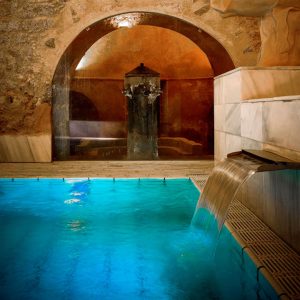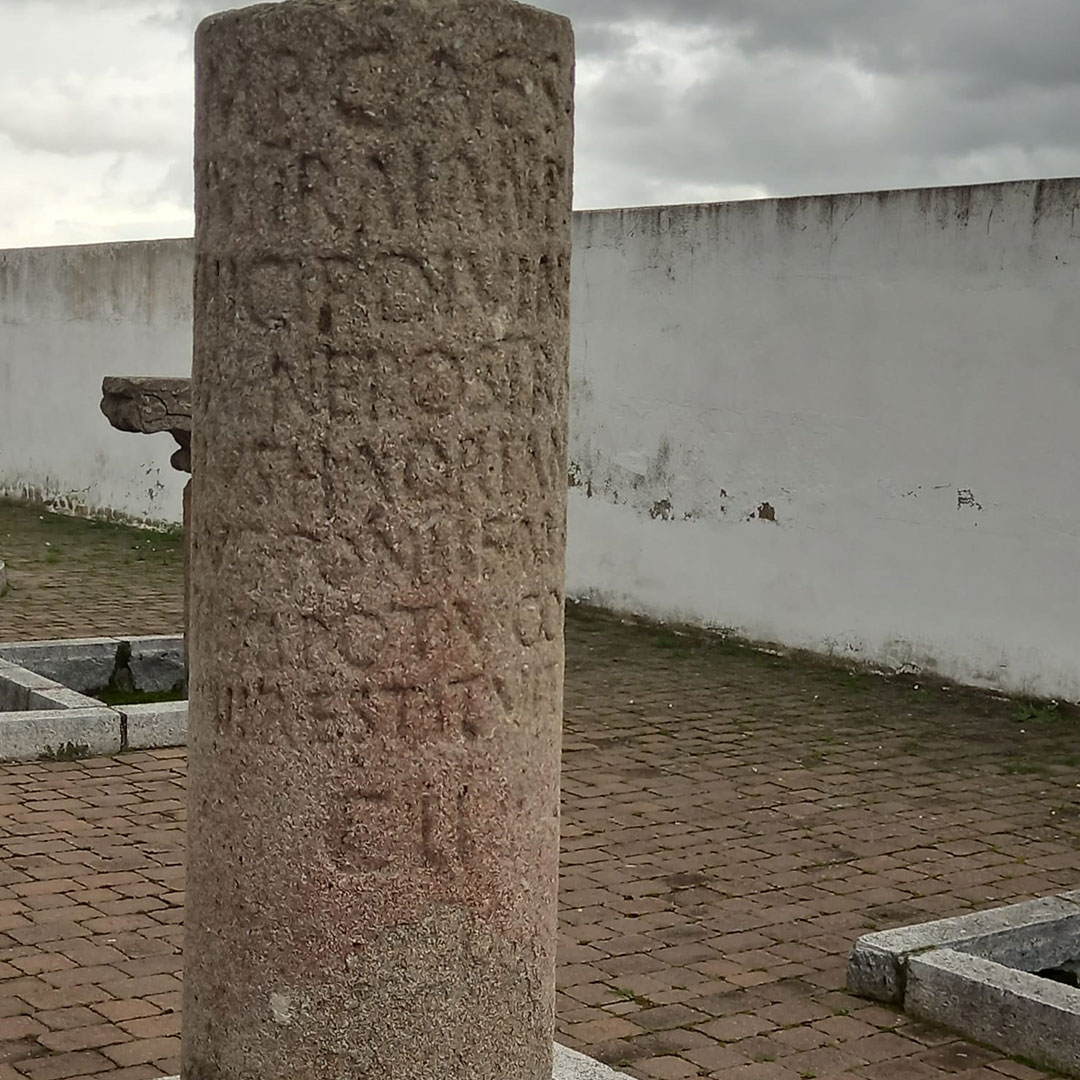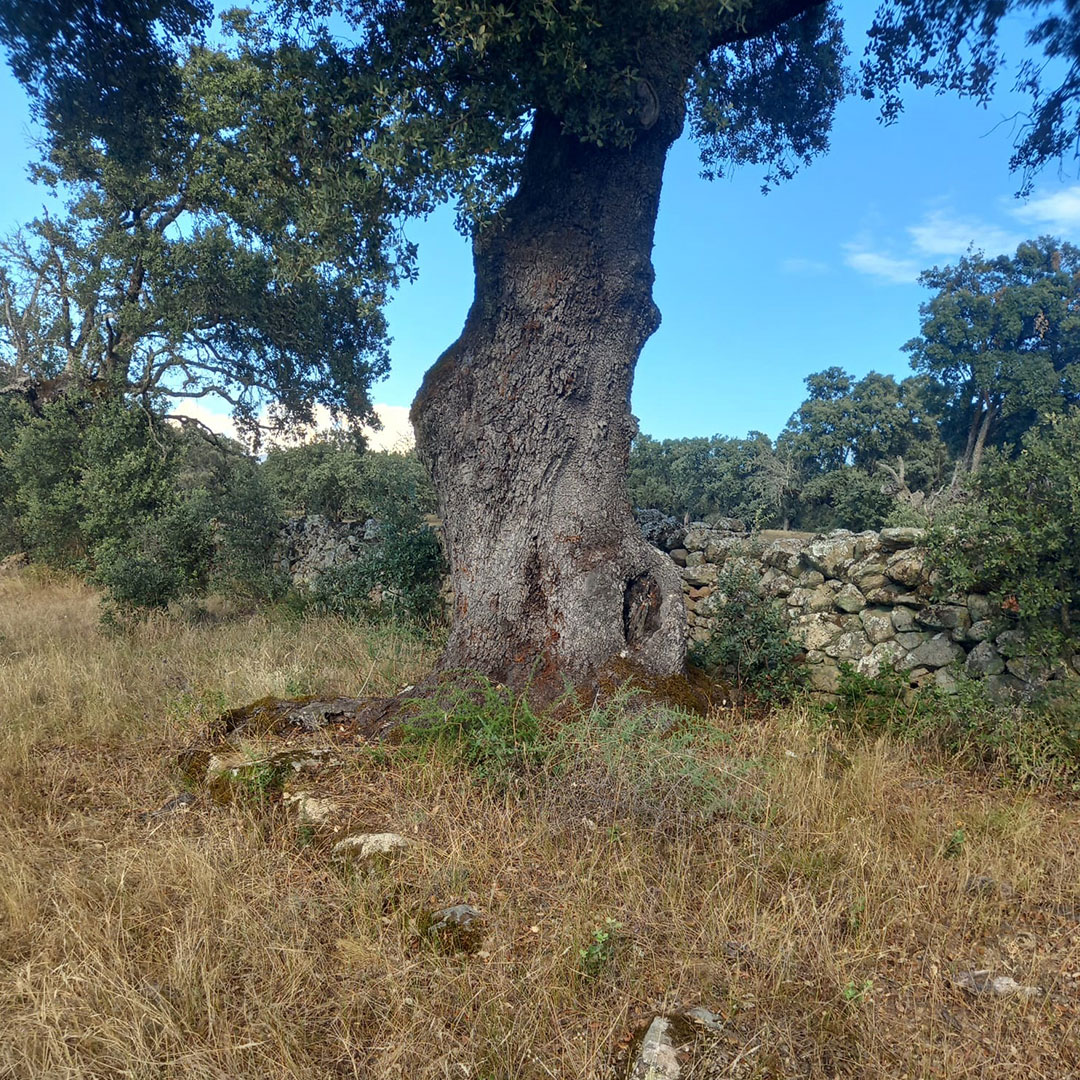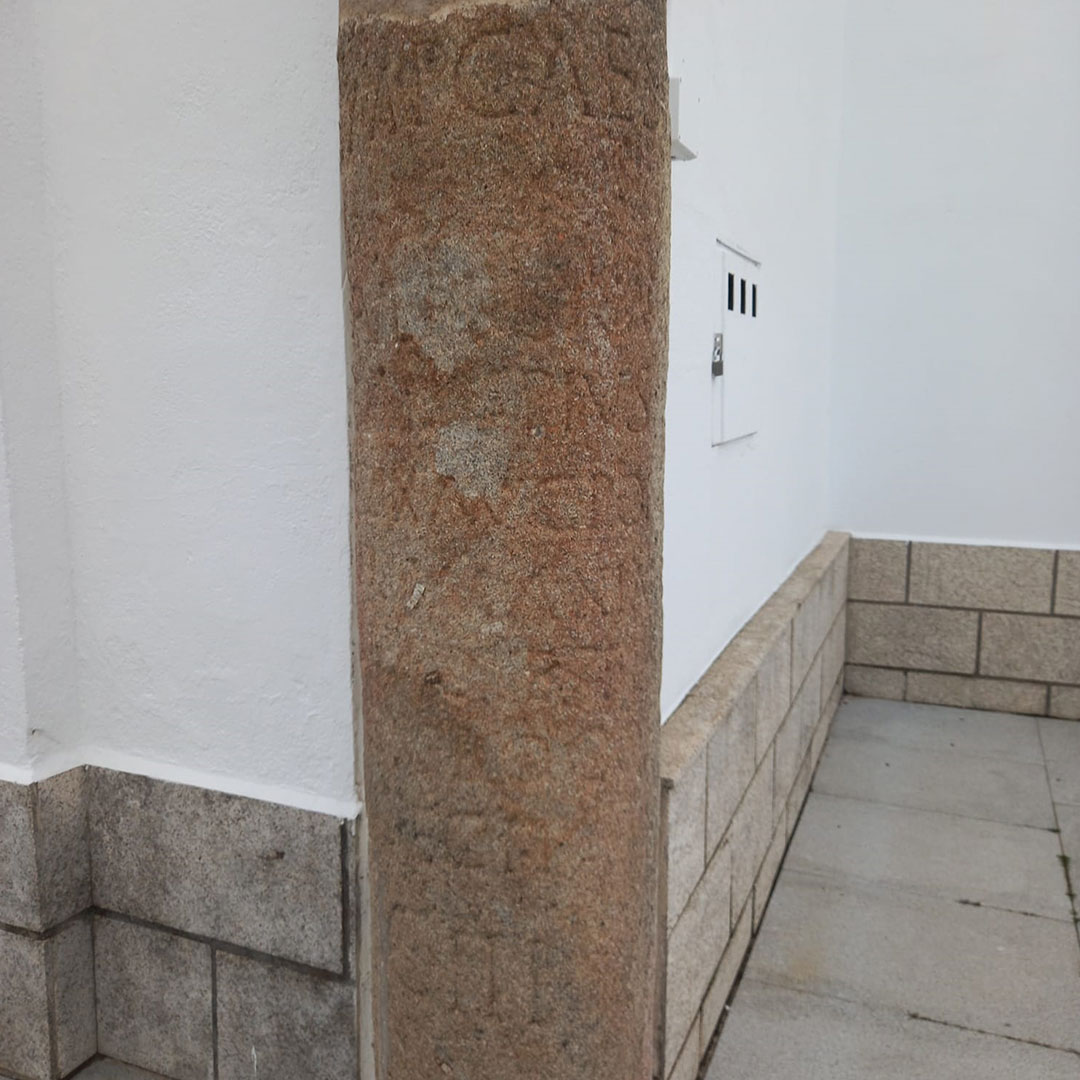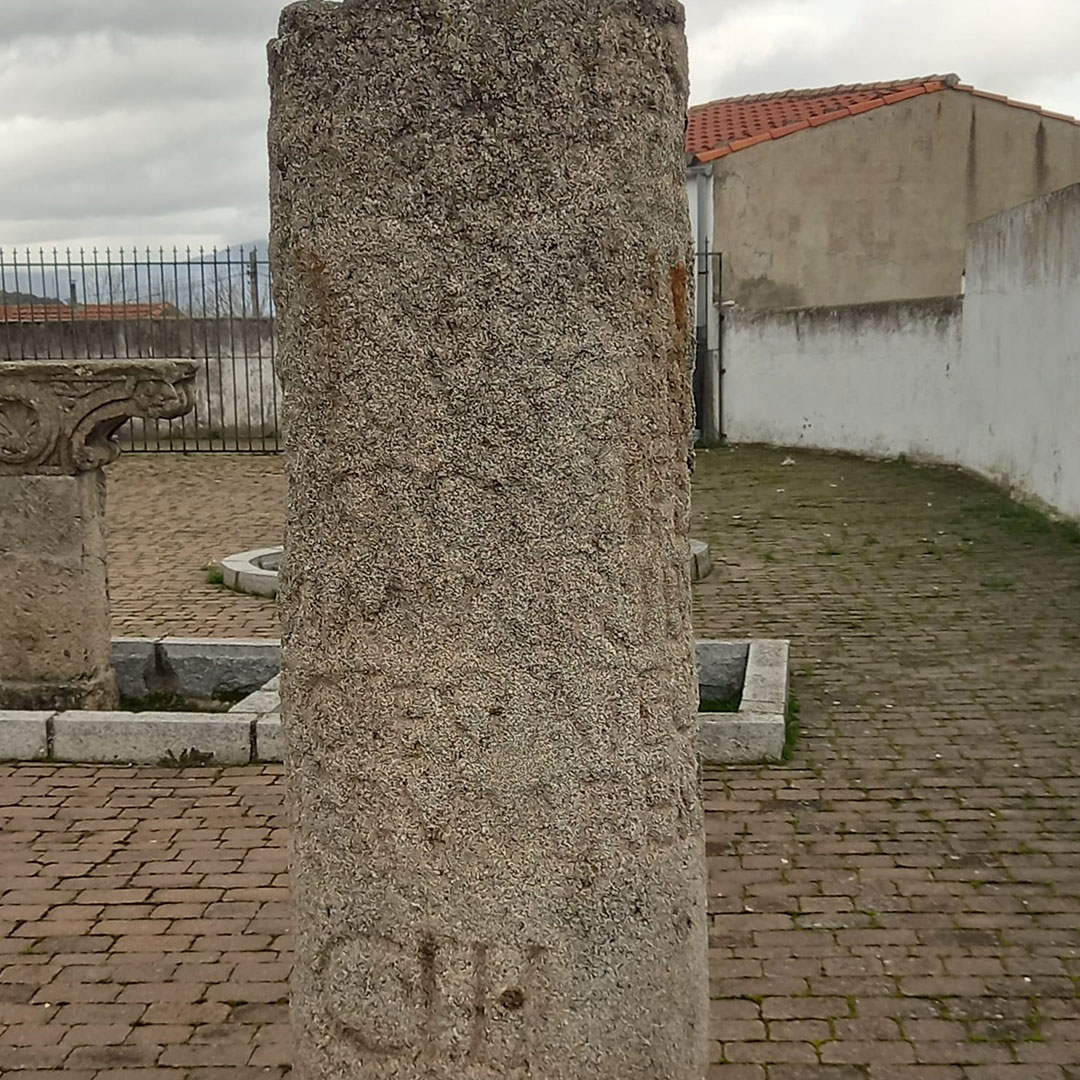The Vía de la Plata Roman Road through the Caparra Mountains
Portada » The Vía de la Plata Roman Road through the Caparra Mountains
On its right bank it runs through Plasencia and Oliva de Plasencia and on the left it crosses through the municipalities of Valdeobispo, Ahigal and Guijo de Granadilla.
Our journey begins at the spot where the boundaries of Plasencia, Valdeobispo and Oliva de Plasencia coincide. The spot is marked by a fragment of milestone on the roadway. A few meters away, the pedestal of the milestone corresponding to mile CII is conserved in situ, embedded on its left side (photo 1). A few metres to the left, there is another milestone fragment in the stream and an intact milestone which has been repurposed as an animal feeder, dating back to the time of the emperors Marcus Aurelius and Maximus (photo 2).
We walk in a northerly direction following the Mérida – Astorga route. About 1,500 metres ahead, there are several milestones, some of them intact. One of them contains inscriptions indicating who erected it and for what purpose. The best-preserved milestones were taken to Carcaboso and placed near the church, where they remain today (photos 3 and 4). These milestones date back to the emperors Trajan, Hadrian, and Marcus Aurelius, specifically mile CIII (the translation can be found in the book titled La ciudad Romana de Cáparra by Jaime Río Miranda-Alcón, available in pdf for free at www.caparra.es).
About eight hundred metres farther on, we leave the Valdeobispo and enter Ahigal. If we walk on the right side of the road we pass through the Cuarto Real dehesa. On the left side, there are enclosures for grazing cattle, where several fragments of the milestone numbered CIV, from the time of the emperors Marcus Severus, Valerius, and Maximilian, can be found. If you open any of these enclosures to walk through, be sure to close the gates so that the cattle do not get out.
Along the way we’ll see several H-2 and H-3 markers marking the path and the towns we pass through. Notably, a stone wall on the roadway serves as a municipal boundary, known as “El Lindón”. This wall also marked the boundary of the dioceses of Coria and Plasencia, as well as the feudal lordships of the Duke of Alba and the Count of Oliva. Even older is the boundary marking the kingdoms of León and Castilla, established by the Treaty of Sahagún (1158) and the Treaty of Tordehumos (1194).
The next milestone is located in Las Navalleras and corresponds to number CV from the time of Tiberius (photo 5).
All along this stretch of road, the landscape is filled with holm oaks and cork oaks. The right side is part of the Valtravieso dehesa.
A few metres off the road to the left, near Del Cuervo, is a majestic centenary cork oak which is being irreparably damaged by drought (photo 6).
The path ascends gently toward milestone CVI. To the right is the dehesa of Valverdejo, and to the left, Los Ventorros de Ahigal. Just before this point, we’ll witness one of the most inappropriate actions taken on the Vía de la Plata: an electric tower placed directly on the roadway, disrupting the harmony of the landscape (photo 7). At this point, the road joins an alternative path of the Way of St. James coming from the Cañada Real Soriana Occidental. We cross the CC-206 motorway and enter the Guijo de Granadilla area near the Venta Quemada dehesa.
We continue along the Roman road and Royal Drover’s Road until we reach the Arroyo de las Torricas, where milestone CVII from the time of Maximus, son of Maximinus Caesar, is located. Several holm oaks have grown over the road and at the foot of one of them we can clearly see the curb (photo 8). A little further on, we arrive at the Arroyo de Los Charcos Blancos, where milestone CVIII once stood, though it is no longer visible here. The boundary separates from the edge of the road at this point and descends to the right towards the Los Carrones dehesa. This section is suitable for small vehicles, and since there is no vegetation the top layer of the roadway is perfectly visible.
We continue our ascent up to the Montemohedas house, the original location of the CIX milestone, which was found in the Cáparra River (photo 9).
We walk about 300 metres and come to a crossroads. The drover’s road turns left toward the Roman bridge over the Cáparra River and continues to Abadía, where cattle ranchers once paid the Duke of Alba for using the drover’s road.
We turn right and continue along the road, passing by a farmhouse on the Casablanca dehesa. For several generations, the owners have collected inscriptions and other archaeological remains from Cáparra, including a marble statue of “The Judge” referred to as “The Saint” and three fragments of milestone CX from the time of Nero-Claudius, which are preserved here. A recreation of this milestone can be seen near the Cáparra arch (photo 10). We enter the city through the remains of the South Gate and leave the paved road to the right. We’re on the decumanus (main east-west street), observing the archaeological remains as we walk. We pause beneath the grandeur of the Tetrapylon Arch (that’s a different story, and one we highly recommend).
Cipri Paniagua Paniagua
Visit more posts of the Blog
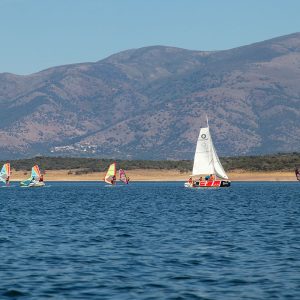
How to Navigate the Reservoirs of Cáceres
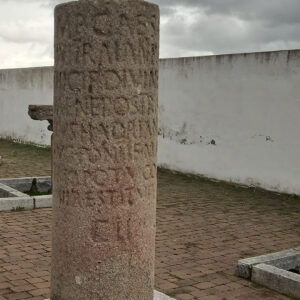
The Vía de la Plata Roman Road through the Caparra Mountains
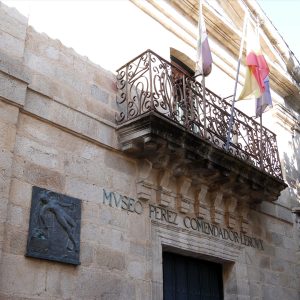
Perez Comendador-Leroux Museum
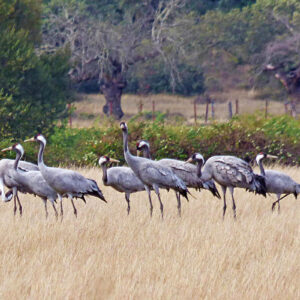
Diverse Birdlife in Ambroz-Cáparra

The Vía de la Plata Roman Road through Ambroz-Cáparra
